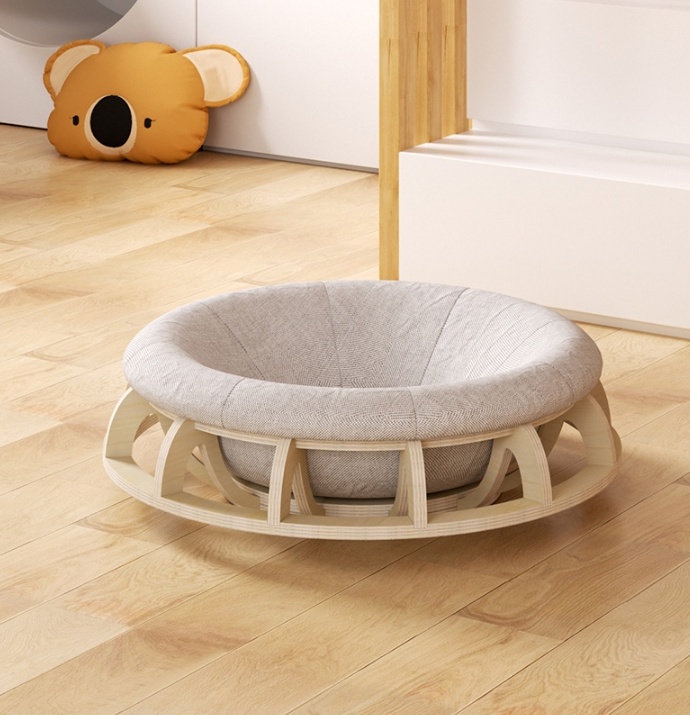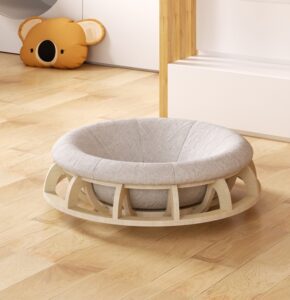
Discount up to 35% for first purchase only this month.
Account


As pet owners, ensuring our furry companions enjoy a restful night’s sleep is a top priority. Just like humans, pets need a comfortable and cozy place to rest their tired bodies. This is where pet bedding comes into play. The right bedding not only enhances the quality of sleep for your pets but also contributes to their overall health and well-being. In this article, we’ll explore the importance of quality comfortable pet bedding, the various types available, and tips for choosing the perfect bedding for your beloved animals.
Quality pet bedding serves multiple purposes that extend beyond mere aesthetics. Here are some reasons why investing in good bedding is crucial for your pet’s health:
Pets, especially those that are older or have joint issues, require bedding that provides ample support. A well-cushioned bed can alleviate pressure on their joints and promote better posture during sleep. Orthopedic beds, for instance, are designed to support aging pets or those with arthritis, ensuring they wake up refreshed and pain-free.
Just as humans prefer different bedding materials based on the season, pets also benefit from temperature-regulating fabrics. Some materials retain warmth, making them ideal for colder months, while others are breathable and cool, providing comfort during warmer months. Ensuring your pet has the right bedding can help them maintain a comfortable body temperature throughout the night.
Quality bedding is typically easier to clean and maintain, which is essential for your pet’s health. Regular washing helps eliminate odors, allergens, and bacteria, reducing the risk of skin irritations and respiratory issues. Look for bedding made from materials that are machine washable and resistant to stains.
A cozy bed can provide a sense of security for your pet. Dogs and cats are instinctively drawn to warm and soft places where they feel safe. A familiar bedding environment can help reduce anxiety, especially for pets that may be nervous or skittish.
With a variety of pet bedding options available, it’s essential to choose the right type based on your pet’s specific needs and preferences. Here are some popular types of pet bedding:
These are standard beds available in various shapes and sizes. They often come in padded forms with different covers, making them suitable for most pets. Traditional beds are versatile and can be placed anywhere in your home.
Designed specifically for older pets or those with joint problems, orthopedic beds feature memory foam or other supportive materials. These beds help distribute your pet’s weight evenly, providing the necessary support for joints and muscles.
Ideal for pets that are always cold, heated beds can be particularly beneficial during winter months. These beds feature built-in heating elements that maintain a comfortable temperature, ensuring your pet stays warm and cozy.
These beds have a unique design that allows pets to burrow inside. They provide a sense of security and warmth, making them ideal for pets that enjoy enclosed spaces. Nest beds are especially popular among cats and small dogs.
Sometimes, a simple pet blanket is all you need. They can be used to line a pet’s bed, cover furniture, or simply provide warmth during colder nights. Pet blankets are typically easy to clean and maintain.
For pets that accompany their owners on trips, travel beds are essential. These beds are portable, lightweight, and often foldable, making them perfect for car rides or vacations.
When selecting bedding for your pet, consider the following factors to ensure you make the best choice:
Always choose a bed that is appropriate for your pet’s size. A bed that is too small can cause discomfort, while one that is too large may not provide the warmth and security your pet desires. Measure your pet when they’re lying down to find the perfect fit.
Look for bedding made from durable, non-toxic materials. Pet-friendly fabrics like microfiber, fleece, and cotton are great options, as they are both soft and easy to clean. Additionally, consider hypoallergenic materials if your pet has sensitivities.
Pets can be messy, so choose bedding that is machine washable. This will make it easier to keep their sleeping area clean and odor-free. Look for beds with removable covers for easy washing.
While functionality is crucial, style should not be overlooked. Choose bedding that complements your home’s decor. Many brands offer a wide range of colors and designs, so you can find something that fits seamlessly into your living space.
Quality pet bedding can vary in price. Set a budget before you start shopping, but remember that investing in a good-quality bed is an investment in your pet’s health and comfort. There are many affordable options that do not compromise on quality.
Before making a purchase, check online reviews from other pet owners. Their experiences can provide valuable insight into the durability, comfort, and overall quality of the bedding.
Providing cozy and comfortable pet bedding is essential for ensuring restful nights for your furry friends. By understanding the importance of quality bedding, exploring various types available, and following tips for selection, you can create a comfortable sleeping environment that promotes better health and well-being for your pets. Remember, a happy pet is a healthy pet, and a good night’s sleep is fundamental to their overall happiness. Choose wisely, and your pet will thank you with snuggles and purrs for years to come!
1. How often should I wash my pet’s bedding?
It’s generally recommended to wash your pet’s bedding every 1-2 weeks. However, if your pet is particularly active, sheds a lot, or has allergies, you may want to wash it more frequently. Always check the care instructions provided by the manufacturer for specific washing guidelines.
Look for bedding made from durable, non-toxic, and easy-to-clean materials. Common options include cotton, fleece, and microfiber. If your pet has allergies, hypoallergenic materials are also a good choice. Additionally, memory foam and orthopedic materials are great for providing support.
To choose the right size bed, measure your pet while they are lying down and consider their length and width. The bed should be large enough for them to stretch out comfortably. A good rule of thumb is to add a few inches to their measurements to ensure a proper fit.
Yes, heated beds can be safe for pets when used properly. Make sure to choose beds specifically designed for pets, as they have safety features to prevent overheating. Monitor your pet while they use the bed, especially if they are young, old, or have special health considerations.
If your pet is hesitant to use their new bed, try placing it in a familiar area where they usually relax. Adding their favorite blanket or a piece of your clothing can help make the bed more inviting. You may also consider using treats or toys to encourage them to explore the new bedding. Patience is key, as some pets may take time to adjust.